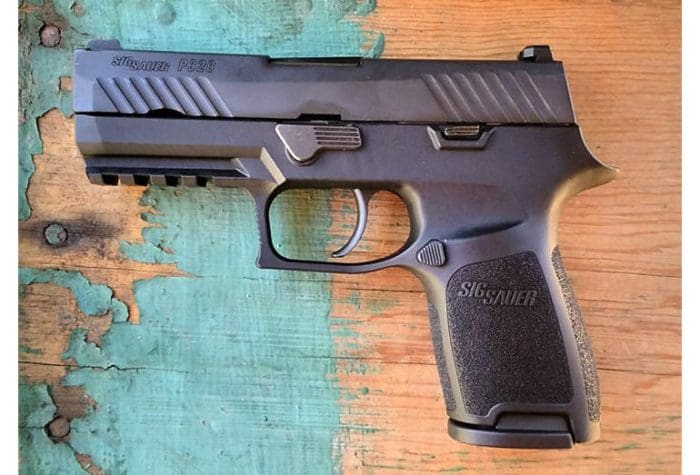A lot of gun buyers buy the duty gun models used by the police and the military. That’s one of the reasons those gun makers navigate the hurdles and fight so hard for those contracts. The pros use those guns, the refrain goes, therefore they must be better that these other models.
But are they? Does it matter as much as people say it does when it comes to a handgun?
For instance, SIG SAUER P320 pistols started flying off the shelves when it was announced that the military had chosen it as the next service pistol for the armed forces. Granted, it wasn’t a bad choice; the P320 has a lot of excellent features.
However, a few things about the P320 eventually came to light. First, the civilian version (specifically the version with the light DAO curved blade rather than tabbed trigger) was prone to accidental discharge under certain conditions and SIG SAUER announced a voluntary recall.
Second, it wasn’t exactly uncommon knowledge that the SIG’s lower per unit cost was a major factor. The GAO (PDF) found as much, since SIG beat GLOCK’s bid by about $103 million.
The P320 is an example in microcosm why it doesn’t matter as much as one might think whether a pistol, shotgun or rifle is a designated service weapon.
Cost is a larger factor than one might think in which pistols are issued to law enforcement and military personnel. SIG SAUER, as mentioned, beat out GLOCK’s bid by more than $100 million, and testing – while flawed in many ways – didn’t show that GLOCK’s pistol was really so far ahead of the P320 platform that it justified spending an additional $100 million. That’s 20 percent of what the military was going to spend on these guns in total.
As some may recall, the cost of the SIG P226 was higher than that of the Beretta M9, which is why the latter was selected over the former back in the 1980s as the (then) next generation service pistol.
No organization in their right mind would have greenlit a more expensive option that was only marginally better than a less expensive one that still met all their needs, much less a government agency.
Law enforcement agencies, likewise, make purchasing decisions that take cost into consideration to issue new pistols, too. Of course they all went to poly-striker guns in the past 20 years; they weight and cost a whole lot less than big steel pistols.
Granted, GLOCKs are known for having long service lives so it’s actually great value for money, but the point is that a lot of officers carry a particular gun because their department got them for cheap.
Additionally, whatever the gun magazines tell you, even the most popular guns still have bad examples come off the production line. There are design flaws, there are bad batches of parts and so on. It’s the same with the car industry; Hondas and Toyotas run a long time, but they’ve also had their recalls.
We know SIG SAUER had issues with the P320. But go Google “GLOCK recall” and see what turns up. The most recent was in 2016. There are even SIG P226 pistols that had difficulties. Yes, it has happened. Including…better not tell the 1911 guys this…1911 pistols that required extensive work to shoot reliably.
So, the point here is that just because a particular firearm is chosen by a police department or military unit doesn’t necessarily mean it’s the be-all, end-all of reliability or accuracy. As can be easily determined, the cost to buy the thing is a huge factor in those purchasing decisions. And even the “most reliable” guns aren’t exactly infallible. Not by a long shot.
Sam Hoober is a contributing editor at Alien Gear Holsters, as well as for Bigfoot Gun Belts. He also writes weekly columns for Daily Caller and USA Carry.
